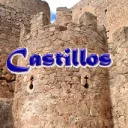• MONASTERIO DE POBLET
 Asentado en la falda de las montañas de Prades, y con una riqueza paisajística incomparable. Fue fundado el conde de Barcelona Ramón Berenguer IV que alrededor del año 1150 donó las tierras. El primer cenobio fue impulsado y patrocinado por Ramón Berenguer IV, conde de Barcelona, que lo entregó a los monjes bernardos de la abadía de Fontfroide en el año 1149. y es el conjunto cisterciense habitado más grande de Europa.
Asentado en la falda de las montañas de Prades, y con una riqueza paisajística incomparable. Fue fundado el conde de Barcelona Ramón Berenguer IV que alrededor del año 1150 donó las tierras. El primer cenobio fue impulsado y patrocinado por Ramón Berenguer IV, conde de Barcelona, que lo entregó a los monjes bernardos de la abadía de Fontfroide en el año 1149. y es el conjunto cisterciense habitado más grande de Europa.
Encontraras las siguientes visitas:
- Puerta de Prades – Puerta Dorada – Puerta Real.- de los tres recintos del monasterio.
- Monasterio de Poblet. Es el prototipo de abadía cisterciense española y panteón real de los reyes de la Corona de Aragón, desde Alfonso II. Junto con el monasterio de Santas Cruces y el San Juan de la Peña (Huesca), son los poseedores de los panteones reales de los reyes de la Corona de Aragón.
- Claustro Mayor, con la Sala Capitular, Refectorio, locutorio, calefactorio y la cocina.
- Iglesia con el retablo Mayor de Damián Forment, y los sepulcros reales en torno al crucero.
- Dormitorio, biblioteca, las estancias del abad Copons
- Palacio de Martín I el Humano
- Y el Museo con los objetos del monasterio instalado en las estancias del palacio
Puedes descargarte el PDF con información, planos, fotos y contactos.
Pulsar sobre la imagen con el botón derecho y guardar como…para descargar y llevar el archivo PDF en tu tablet o smartphone.
-
POBLET MONASTERY
Seated in the foothills of the Prades mountains, and with an incomparable landscape richness. The count of Barcelona Ramón Berenguer IV was founded, who around 1150 donated the land. The first monastery was promoted and sponsored by Ramón Berenguer IV, count of Barcelona, who delivered it to the Bernardo monks of the Fontfroide abbey in 1149. It is the largest inhabited Cistercian complex in Europe.
You will find the following visits:
- Prades Gate – Golden Gate – Royal Gate – of the three precincts of the monastery.
- Monastery of Poblet. It is the prototype of the Spanish Cistercian abbey and royal pantheon of the kings of the Crown of Aragon, from Alfonso II. Together with the monastery of Santas Cruces and San Juan de la Peña (Huesca), they are the owners of the royal pantheons of the kings of the Crown of Aragon.
- Main Cloister, with the Chapter Hall, Refectory, booth, heating and kitchen.
- Church with the main altarpiece of Damián Forment, and the royal tombs around the cruise.
- Bedroom, library, the rooms of Abbot Copons
- Palace of Martin I the Human
- And the Museum with the objects of the monastery installed in the rooms of the palace
You can download the PDF with information, plans, photos and contacts.
Click on the image with the right button and save as … to download and bring the PDF file to your tablet or smartphone.
-
MONASTERE DE POBLET
Assis dans les contreforts des montagnes de Prades et avec une richesse de paysage incomparable. Le comte de Barcelone Ramón Berenguer IV a été fondé. Il a fait don du terrain vers 1150. Le premier monastère fut promu et parrainé par le comte de Barcelone Ramón Berenguer IV, qui le remit aux moines Bernardo de l’abbaye de Fontfroide en 1149. Il s’agit du plus grand complexe cistercien habité d’Europe.
Vous trouverez les visites suivantes:
- Porte Prades – Porte Dorée – Porte Royale – des trois enceintes du monastère.
- Monastère de Poblet. C’est le prototype de l’abbaye cistercienne espagnole et du panthéon royal des rois de la couronne d’Aragon, de Alphonse II. Avec le monastère de Santas Cruces et San Juan de la Peña (Huesca), ils sont les propriétaires des panthéons royaux des rois de la couronne d’Aragon.
- Cloître principal, avec la salle du chapitre, le réfectoire, la cabine, le chauffage et la cuisine.
- Église avec le retable principal de Damián Forment et les tombeaux royaux autour de la croisière.
- Chambre à coucher, bibliothèque, les chambres de l’abbé Copons
- Palais de Martin I l’Humain
- Et le musée avec les objets du monastère installés dans les salles du palais
Vous pouvez télécharger le PDF avec des informations, des plans, des photos et des contacts.
Cliquez sur l’image avec le bouton droit et enregistrez sous … pour télécharger et importer le fichier PDF sur votre tablette ou votre smartphone.
-
POBLET – KLOSTER
In den Ausläufern des Prades gelegen und mit einem unvergleichlichen landschaftlichen Reichtum. Der Graf von Barcelona Ramón Berenguer IV wurde gegründet, der um 1150 das Land stiftete. Das erste Kloster wurde von Ramón Berenguer IV., Graf von Barcelona, gefördert und gefördert, der es 1149 an die Bernardo-Mönche der Fontfroide-Abtei übergab. Es ist der größte bewohnte Zisterzienserkomplex in Europa.
Sie werden die folgenden Besuche finden:
- Prades-Tor – Goldenes Tor – Königliches Tor – der drei Bezirke des Klosters.
- Kloster von Poblet. Es ist der Prototyp der spanischen Zisterzienserabtei und des königlichen Pantheons der Könige der Krone von Aragon aus Alfons II. Zusammen mit dem Kloster Santas Cruces und San Juan de la Peña (Huesca) sind sie die Eigentümer der königlichen Pantheons der Könige der Krone von Aragon.
- Hauptkreuzgang mit Kapitelsaal, Refektorium, Stand, Heizung und Küche.
- Kirche mit dem Hauptaltar von Damián Forment und den Königsgräbern rund um die Kreuzfahrt.
- Schlafzimmer, Bibliothek, die Räume von Abbot Copons
- Palast von Martin I. dem Menschen
- Und das Museum mit den Objekten des Klosters in den Räumen des Palastes installiert
Sie können das PDF mit Informationen, Plänen, Fotos und Kontakten herunterladen.
Klicken Sie mit der rechten Maustaste auf das Bild und speichern unter …, um die PDF-Datei herunterzuladen und auf Ihr Tablet oder Smartphone zu bringen.

 castillode.wordpress.com
castillode.wordpress.com museode.wordpress.com
museode.wordpress.com